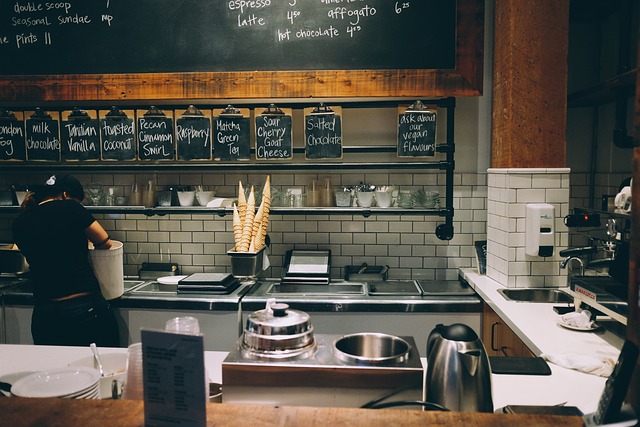Glue lamination creates strong composite materials (glue laminated beams) by bonding wood or natural fibers, reducing waste and conserving resources compared to traditional construction methods. GL beams offer enhanced strength, stiffness, longevity, and customizable designs while minimizing carbon emissions and project timelines. Their lightweight yet robust nature, streamlined production, and reduced material waste make them cost-effective and eco-friendly solutions for both residential and commercial projects, revolutionizing green architecture.
Sustainable building materials are transforming the construction industry, and one innovative technique gaining traction is glue lamination. This article explores the promise of this eco-friendly method through an in-depth look at its key aspects. We delve into the basics of the glue lamination technique, highlighting its environmental benefits, structural integrity advantages, cost-effectiveness, and growing adoption trends in the industry. Discover why glue laminated beams offer promising solutions for both builders and the planet.
- The Basics of Glue Lamination Technique
- Environmental Benefits of Glue Laminated Beams
- Structural Integrity and Performance Advantages
- Cost-Effectiveness and Accessibility in Construction
- Future Potential and Industry Adoption Trends
The Basics of Glue Lamination Technique

Glue lamination is an innovative technique that involves binding structural elements together using adhesive to create strong and durable composite materials. This method, often referred to as glue laminated beams, offers a promising solution for sustainable construction. By combining multiple smaller pieces of wood or other natural fibers, this process creates larger, more robust structural components while minimizing waste.
The advantages of the glue lamination technique are numerous, especially when applied to eco-friendly building projects. It allows for the use of lower-grade or scrap materials, reducing the demand for virgin resources. Glue laminated beams can also improve a structure’s overall strength and stiffness, making them suitable for various applications, including commercial architecture. This versatile method offers a compelling alternative to conventional construction techniques, contributing to more sustainable and cost-effective building practices. For further exploration, visit us at unalam.com anytime.
Environmental Benefits of Glue Laminated Beams

Glue lamination technology offers significant environmental benefits in construction, especially when compared to traditional building methods. One of the key advantages is its positive impact on forest resources and carbon emissions. By utilizing wood from responsibly managed forests and advanced gluing techniques, glue laminated beams (GL beams) can be produced with minimal waste, reducing the need for excessive cutting and logging. This sustainable approach not only conserves natural habitats but also sequesters carbon, contributing to a greener environment.
The process of laminating wood beams enhances their stiffness and strength, making GL beams a superior choice for various applications. Their resilience and adaptability make them ideal for dynamic environments, ensuring structural integrity in challenging conditions. Moreover, fast construction with prefab glue laminated beams can significantly reduce project timelines, leading to cost savings and minimizing the carbon footprint associated with extended building periods. Contact us at (607) 369-9341 for more insights on how GL beams are revolutionizing sustainable construction.
Structural Integrity and Performance Advantages

Glue lamination offers significant structural integrity and performance advantages when compared to traditional building methods. The process involves bonding multiple layers of wood veneers together with powerful adhesives, creating robust and durable components known as glue laminated beams (GL beams). This innovative technique enhances the strength-to-weight ratio of wood, making GL beams strong enough for heavy structural applications while remaining lighter than solid timber.
One of the key advantages is the longevity of glue laminated wood beams, which can outlast conventional construction in both residential and commercial settings. Moreover, reducing material waste with GL beam fabrication is another significant benefit, as the precise cutting and lamination process minimizes scrap, making it an eco-friendly option. Additionally, design flexibility with customizable glulaminated components allows architects and engineers to create unique structural designs, pushing the boundaries of modern architecture while maintaining exceptional structural integrity. Visit us at 18 Clifton St, Unadilla, NY 13849 anytime for more insights into sustainable building solutions.
Cost-Effectiveness and Accessibility in Construction

The advantages of Glue Laminated (GL) beams offer significant cost-effectiveness and accessibility solutions for the construction industry. One of the key benefits is its lightweight yet robust nature, which streamlines construction processes and reduces material waste—a critical factor in minimizing a project’s environmental impact. This method allows for more efficient use of resources, as GL lamination techniques can create structural elements that are stronger than traditional methods while using less raw material.
Furthermore, the reduced carbon footprint associated with GL lamination is an appealing aspect for environmentally conscious builders and developers. As the construction sector contributes significantly to global emissions, adopting materials and methods that lower energy consumption and waste generation is a step towards creating more sustainable and energy-efficient buildings. For those seeking innovative solutions, GL beams provide an accessible gateway to these benefits, with options available to suit various project needs. You can find further information and explore the potential of GL lamination at unalam.com.
Future Potential and Industry Adoption Trends

The future of sustainable construction looks promising for glue lamination, with growing industry trends indicating its potential to revolutionize building practices. As awareness about environmental impact increases, architects and builders are actively seeking eco-friendly alternatives. Glue laminated beams offer a compelling solution, combining strength, durability, and environmental benefits. Their production involves gluing together multiple layers of wood, creating robust structural elements that reduce material waste compared to traditional methods. This not only minimizes the carbon footprint but also results in cost savings through efficient glulaminated beam production.
The local availability of materials for glue laminated construction is another advantage, as it reduces transportation emissions and supports regional economies. As a testament to its growing adoption, many professionals are exploring how sustainable building practices leveraging glued laminar can be seamlessly integrated into modern design. With innovative techniques and designs, this technology promises to shape the future of green architecture. For those interested in learning more, visiting our location at 18 Clifton St, Unadilla, NY 13849 can offer valuable insights and a firsthand look at these remarkable building materials.
Glue lamination emerges as a promising, sustainable building material that offers significant advantages over traditional methods. From enhanced structural integrity and environmental benefits to cost-effectiveness and improved accessibility in construction, glue laminated beams present a compelling case for the future of green building. As industry trends indicate increasing adoption, the promise of this innovative technique is set to revolutionize sustainable construction, providing a stronger, more eco-conscious foundation for tomorrow’s buildings.














